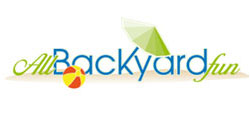Environmental News
Environmental News from Boulder, Colorado
MEASUREMENTS OF WINTER ARCTIC SEA ICE SHOWS CONTINUING ICE LOSS, SAYS CU-BOULDER STUDY
Mar 23rd
The CU-Boulder research team believes the lowest annual maximum ice extent of 5,650,000 square miles occurred on March 7. The maximum ice extent was 463,000 square miles below the 1979-2000 average, an area slightly larger than the states of Texas and California combined. The 2011 measurements were tied with those from 2006 as the lowest maximum sea ice extents measured since satellite record keeping began in 1979.
Virtually all climate scientists believe shrinking Arctic sea ice is tied to warming temperatures in the region caused by an increase in human-produced greenhouse gases being pumped into Earth’s atmosphere. Because of the spiraling downward trend of Arctic sea ice extent in the last decade, some CU scientists are predicting the Arctic Ocean may be ice free in the summers within the next several decades.
The seven lowest maximum Arctic sea ice extents measured by satellites all have occurred in the last seven years, said CU-Boulder Research Scientist Walt Meier of the National Snow and Ice Data Center, who participated the latest study. “I’m not surprised by the new data because we’ve seen a downward trend in winter sea ice extent for some time now.”
Scientists believe Arctic sea ice functions like an air conditioner for the global climate system by naturally cooling air and water masses, playing a key role in ocean circulation and reflecting solar radiation back into space, said Meier. In the Arctic summer months, sunlight is absorbed by the growing amounts of open water, raising surface temperatures and causing more ice to melt.
“I think one of the reasons the Arctic sea ice maximum extent is declining is that the autumn ice growth is delayed by warmer temperatures and the ice extent is not able to ‘catch up’ through the winter,” said Meier. “In addition, the clock runs out on the annual ice growth season as temperatures start to rise along with the sun during the spring months.”
Since satellite record keeping began in 1979, the maximum Arctic sea ice extent has occurred as early as Feb. 18 and as late as March 31, with an average date of March 6. Since the CU-Boulder researchers determine the maximum sea ice extent using a five-day running average, there is small chance the data could change.
In early April CU-Boulder’s National Snow and Ice Data Center will issue a formal announcement on the 2011 maximum sea ice extent with a full analysis of the winter ice growth season, including graphics comparing 2011 to the long-term record.
For more information visit http://nsidc.org/arcticseaicenews.
Residents may notice a change in taste of water starting tomorrow
Mar 21st
The possible taste change is due to differences in source water chemistry between the Boulder Reservoir Plant and the Betasso Treatment Plant. For more information, contact the city’s Betasso Water Treatment Facility at 303-441-3249.
THAWING PERMAFROST LIKELY WILL ACCELERATE GLOBAL WARMING IN COMING DECADES, SAYS STUDY
Feb 16th
The carbon resides in permanently frozen ground that is beginning to thaw in high latitudes from warming temperatures, which will impact not only the climate but also international strategies to reduce fossil fuel emissions, said CU-Boulder’s Kevin Schaefer, lead study author. “If we want to hit a target carbon dioxide concentration, then we have to reduce fossil fuel emissions that much lower than previously thought to account for this additional carbon from the permafrost,” he said. “Otherwise we will end up with a warmer Earth than we want.”
The escaping carbon comes from plant material, primarily roots trapped and frozen in soil during the last glacial period that ended roughly 12,000 years ago, he said. Schaefer, a research associate at CU-Boulder’s National Snow and Ice Data Center, an arm of CIRES, likened the mechanism to storing broccoli in a home freezer. “As long as it stays frozen, it stays stable for many years,” he said. “But if you take it out of the freezer it will thaw out and decay.”
While other studies have shown carbon has begun to leak out of permafrost in Alaska and Siberia, the study by Schaefer and his colleagues is the first to make actual estimates of future carbon release from permafrost. “This gives us a starting point, and something more solid to work from in future studies,” he said. “We now have some estimated numbers and dates to work with.”
The new study was published online Feb. 14 in the scientific journal Tellus. Co-authors include CIRES Fellow and Senior Research Scientist Tingjun Zhang from NSIDC, Lori Bruhwiler of the National Oceanic and Atmospheric Administration and Andrew Barrett from NSIDC. Funding for the project came from NASA, NOAA and the National Science Foundation.
Schaefer and his team ran multiple Arctic simulations assuming different rates of temperature increases to forecast how much carbon may be released globally from permafrost in the next two centuries. They estimate a release of roughly 190 billion tons of carbon, most of it in the next 100 years. The team used Intergovernmental Panel on Climate Change scenarios and land-surface models for the study.
“The amount we expect to be released by permafrost is equivalent to half of the amount of carbon released since the dawn of the Industrial Age,” said Schaefer. The amount of carbon predicted for release between now and 2200 is about one-fifth of the total amount of carbon in the atmosphere today, according to the study.
While there were about 280 parts per million of CO2 in Earth’s atmosphere prior to the Industrial Age beginning about 1820, there are more than 380 parts per million of carbon now in the atmosphere and the figure is rising. The increase, equivalent to about 435 billion tons of carbon, resulted primarily from human activities like the burning of fossil fuels and deforestation.
Using data from all climate simulations, the team estimated that about 30 to 60 percent of Earth’s permafrost will disappear by 2200. The study took into account all of the permanently frozen ground at high latitudes around the globe.
The consensus of the vast majority of climate scientists is that the buildup of CO2 and other greenhouse gases in Earth’s atmosphere is the primary reason for increasingly warm temperatures on Earth. According to NOAA, 2010 was tied for the hottest year on record. The hottest decade on record occurred from 2000 to 2010.
Greater reductions in fossil fuel emissions to account for carbon released by the permafrost will be a daunting global challenge, Schaefer said. “The problem is getting more and more difficult all the time,” he said. “It is hard enough to reduce the emissions in any case, but now we have to reduce emissions even more. We think it is important to get that message out now.”
CIRES is a joint institute of CU-Boulder and NOAA.
To view a short video of Schaefer talking about thawing permafrost visit http://www.colorado.edu/news and click on the story headline.
-CU media release





















